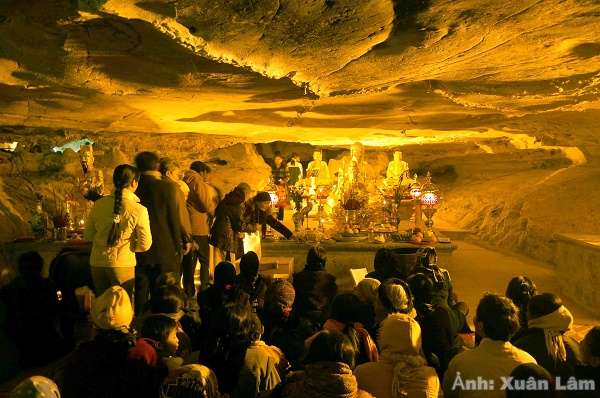The ancient Bai Dinh pagoda is located in the spiritual area of Bai Dinh pagoda mountain in Gia Sinh commune, Gia Vien district, Ninh Binh province. The temple is located on a high mountain and is thousands of years old. Coming to Ninh Binh, do not miss visiting the temple to learn the unique and ancient architecture of this ancient temple.
The ancient Bai Dinh pagoda is located halfway up Dinh mountain. The pagoda was founded by Zen master Nguyen Minh Khong. He was a famous Zen master from Dam Xa commune, Truong Yen district, now Gia Thang commune, Gia Vien district. He is the one who laid the foundation, built the Buddha image and opened the Buddha land here.

Legend has it that, when he went to the mountainous land of Bai Dinh pagoda. He realized that this was a place of fairyland, immense mountains and forests with countless precious medicinal plants. He decided to stop here to meditate and named the mountain Bai Dinh, then turned it into a "biotic garden" (meaning a precious medicinal garden) to save the lives of all people.
The ancient Bai Dinh pagoda has many architectural details and antiques bearing the bold imprint of the Ly Dynasty. The pagoda here does not have a large, massive pillar or a magnificent upper hall. It was built in the style of cave pagoda architecture, which is quite popular like other ancient pagodas in Ninh Binh. To visit the cave in Bai Dinh mountain, visitors have to step on 300 stone steps, through Tam Quan gate in the middle of the mountain. Going up the slope is to the fork is the temple of Saint Nguyen, on the right is the light cave worshiping Buddha, on the left is the dark cave worshiping the Mother. Each cave has its own story and legend that creates mysterious and sacred features at the gate of meditation.
Nearly 1000 years have passed, the ancient Bai Dinh pagoda is still there as a proof of the enduring vitality of Buddhism in the spiritual life of Vietnamese people. The pagoda includes attractions such as: Jade Well, Buddha's cave, Mother's cave, Saint Nguyen Minh Khong's shrine and Cao Son's shrine. In 1997, the pagoda was recognized as a National Historical and Cultural Relic.